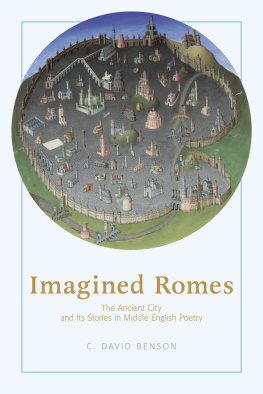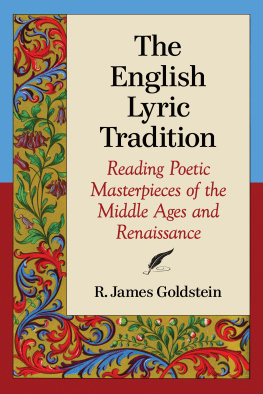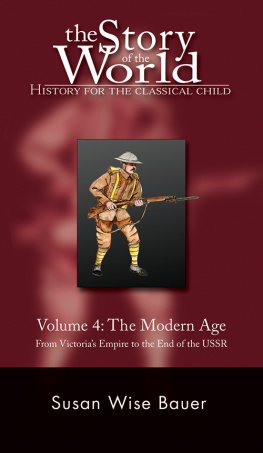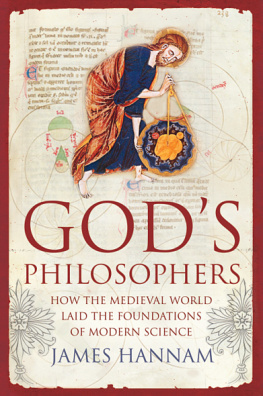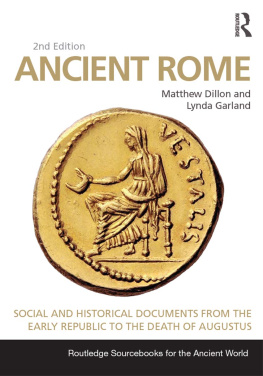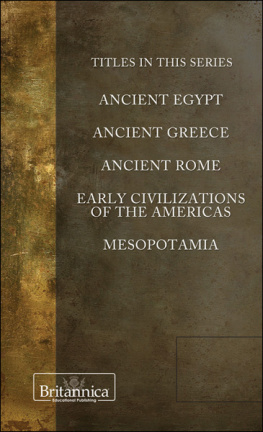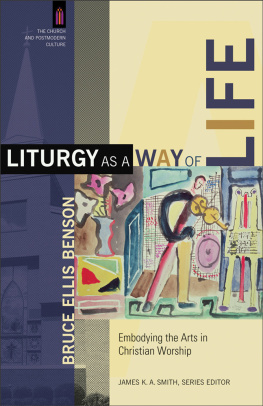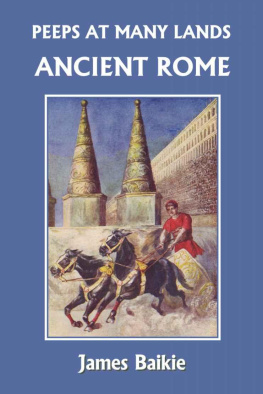Imagined Romes
Imagined Romes

The Ancient City and Its Stories in Middle English Poetry
C. David Benson
The Pennsylvania State University Press
University Park, Pennsylvania
Library of Congress Cataloging-in-Publication Data
Names: Benson, C. David, author.
Title: Imagined Romes : the ancient city and its stories in Middle English poetry / C. David Benson.
Description: University Park, Pennsylvania : The Pennsylvania State University Press, [2019] | Includes bibliographical references and index.
Summary: A study of ancient Rome as a prominent topic in the works of Middle English poets. Discusses how each of these poets conceives of ancient Rome and Romans, both pagan and Christian, and why it matters to their work. Includes the works of Gower, Chaucer, Langland, and LydgateProvided by publisher.
Identifiers: LCCN 2018053163 | ISBN 9780271083209 (cloth : alk. paper)
Subjects: LCSH: English poetryMiddle English, 11001500History and criticism. Rome (Italy)In literature.
Classification: LCC PR317.R66 2019
LC record available at https://lccn.loc.gov/2018053163
Copyright 2019 C. David Benson
All rights reserved
Printed in the United States of America
Published by The Pennsylvania State University Press,
University Park, PA 168021003
The Pennsylvania State University Press is a member of the Association of University Presses.
It is the policy of The Pennsylvania State University Press to use acid-free paper. Publications on uncoated stock satisfy the minimum requirements of American National Standard for Information SciencesPermanence of Paper for Printed Library Material, ANSI Z39.481992.
For Corynn, Hilary, and (of course) Sophie Lee
Contents
Inevitably, this book has taken longer to write than I imagined it would, but my compensation over the last decade has been much happy time spent in Rome and in thinking about Rome. For this enjoyment, I am deeply indebted to a host of friends and colleagues, those named below and those others, who, like so many of the martyrs of Rome, must go unnamed.
For research support, I thank Ross McKinnon, former dean of the College of Arts and Sciences at the University of Connecticut, and the University of Connecticut Research Foundation.
For walks in Rome and for talks about it, I thank Piero Boitani, Dora Faraci and Raffaele Morabito, Michael Maas, Anthony Bale, Julia Boffey, Tony Edwards, and Sarah Stanbury.
I thank the graduate students in the English Department and the Medieval Studies Program at the University of Connecticut for their ideas and interest as I was working on this book. For their hospitality and suggestions, I thank audiences that I have been lucky enough to address at Queen Mary College, London, at Cambridge University, at Glasgow University, at Harvard University, and at the University of California, Berkeley.
I am especially grateful to those friends who took the time to read drafts of my chapters over the years, sometimes all my chapters, and who helped me see where I was going wrong and tried to guide me onto a better path. I thank James Simpson for his unfailing encouragement, wit, and generosity; Ryan Perry and Spencer Strub for their learning and editorial shrewdness; Maura Nolan for her inspiration and advice; Rebecca Krug for her rigor and laughter; Christine Cooper-Rompato for being a better reader for me than I ever was for her; Beth Robertson for this, the most recent of many academic and personal kindnesses; and Jamie Fumo, Linda Georgianna, and Leah Schwebel for knowing so much and passing it on.
My greatest support in this, as in so much else, has been my learned, loving wife, Pam. Lucky the man who is married to a great editor, luckier still when her patience is as inexhaustible as her insight. We got to know Rome together and she has always believed in this book and in me when I doubted both.
It has been a pleasure to work again with Penn State University Press and I am grateful for all who have turned my manuscript into a book, especially Ellie Goodman, for her enthusiasm and advice, Laura Reed-Morrisson and Brian Beer, who shepherded the work through the process, and Suzanne Wolk, for her unfailing eye for error and awkwardness and her skill at remedying both.
I have dedicated this book to the three wonderful and wise women whom my sons have brought into my life.
Some Middle English quotations are slightly modified from the editions I have used. I use the modern forms of (th), (gh or y), and the modern forms u/v when appropriate.
I refer to Roman churches, which are often dedicated to saints, by their Italian names except for St. Peters. Saints themselves, however, are called by the English form of their names.
The question this book asks may seem an odd one: how did Middle English poets imagine the city of ancient Rome? But odder still is that such a question has not really been asked before, let alone answered. Much has been written about the role of other, more legendary ancient cities in Middle English poetry, especially Troy (indeed, I once wrote such a book myself), but about Rome there is mostly silence, even though major poets such as Gower, Chaucer, and Lydgate tell a number of stories set in the city. Of course, articles and books about what Latin literature contributed to Middle English poetry are plentiful, especially those that trace the influence of Ovid on Chaucer. There are also many excellent readings of individual Roman narratives (though they do not give much attention to their Romanness), including the Trajan episode in Piers Plowman and the Second Nuns Tale of Saint Cecilia, but there is no systematic study of ancient Rome as a major theme in the works of late medieval English poets. No one has stopped to ask what it is about Rome and its stories that so attracts these poetsnone of whom actually visited the city. How do these poets conceive of Rome and Romans, and why does that matter to their work? Do these poets share the same attitude about the city and its stories, or does each treat them differently? Rome and Romans have been hiding in plain sight in Middle English poetry, waiting to be recognized as an important topic for study.
The first part of Imagined Romes calls attention to two anonymous and little known poems, the pardons from sin they offer, and the Metrical interpolation surveys the pagan citys monuments, including its palaces, temples, and statues, and names some of the ancient Romans associated with them. Both poems are based on Latin catalogues, but each, in its own way, enlivens its source to stimulate vernacular readers to envision the wonders of ancient Rome. Each creates its own fantasy city. Ignoring the realities of the actual medieval city, the Stacions creates a holy Rome whose ancient martyrs and popes make it a never-ending source of divine mercy for sinners, one unmatched elsewhere and perhaps as beneficial to devout readers of the poem as to actual visitors to the city. The Metrical interpolation derives from a Latin textual tradition that portrays pagan Rome, with its extraordinary marvels, as a worthy ancestor to the Christian city that follows it. The English poem describes an equally fabulous Rome, but its poet is more conflicted about the city: while its monuments are made even more ingenious and alluring, they present a greater danger to the triumph of Christianity precisely because of that allure.

